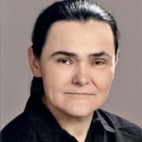Photodynamic Therapy in Medicine
A special issue of Life (ISSN 2075-1729). This special issue belongs to the section "Radiobiology and Nuclear Medicine".
Deadline for manuscript submissions: closed (5 November 2021) | Viewed by 3772
Special Issue Editors
Interests: photodynamic therapy; diagnostics; photosensitizers; treatment; drug delivery, fiber optics, singlet oxygen
Special Issues, Collections and Topics in MDPI journals
Interests: drug delivery; breast cancer treatment; magnetic resonance imaging; magnetic resonance spectroscopy; drug tracking; drug monitoring; molecular imaging
Special Issues, Collections and Topics in MDPI journals
Special Issue Information
Dear Colleague,
Photodynamic therapy (PDT) is an emerging treatment method for cancer and other diseases. This Special Issue “Photodynamic Therapy in Medicine” is aimed at improving current basic and preclinical knowledge about principles of deep-tissue PDT. This Special Issue will present the synthesis of nanoparticles and up-conversion nanoparticles (UCN) with adsorbed fluorescent dyes that can, upon radiation with near-infrared light, excite clinically approved photosensitizers (PS) via FRET-driven fluorescence and evaluate subsequent photodynamic action and dark cytotoxicity in vitro. UCN constructs are expected to extend the depth in tissue to which PDT can be applied by virtue of their ability to absorb near-infrared light, which can penetrate tissue to a depth of several centimeters. The primary anti-cancer agent generated by the PS is singlet oxygen, which can kill cancer cells. In this project, the stability of UCN and the efficiency of singlet oxygen generation in solution and model cells will be reviewed. The intracellular and extracellular concentrations of singlet oxygen will be valuable to measure by singlet oxygen luminescence for real-time dosimetry in cells. This research is expected to advance the understanding of the use of PDT in medicine.
Dr. David Aebisher
Dr. Dorota Bartusik-Aebisher
Guest Editors
Manuscript Submission Information
Manuscripts should be submitted online at www.mdpi.com by registering and logging in to this website. Once you are registered, click here to go to the submission form. Manuscripts can be submitted until the deadline. All submissions that pass pre-check are peer-reviewed. Accepted papers will be published continuously in the journal (as soon as accepted) and will be listed together on the special issue website. Research articles, review articles as well as short communications are invited. For planned papers, a title and short abstract (about 100 words) can be sent to the Editorial Office for announcement on this website.
Submitted manuscripts should not have been published previously, nor be under consideration for publication elsewhere (except conference proceedings papers). All manuscripts are thoroughly refereed through a single-blind peer-review process. A guide for authors and other relevant information for submission of manuscripts is available on the Instructions for Authors page. Life is an international peer-reviewed open access monthly journal published by MDPI.
Please visit the Instructions for Authors page before submitting a manuscript. The Article Processing Charge (APC) for publication in this open access journal is 2600 CHF (Swiss Francs). Submitted papers should be well formatted and use good English. Authors may use MDPI's English editing service prior to publication or during author revisions.
Keywords
- photomedicine
- photochemistry
- singlet oxygen
- photobiology
- lifetime measurements
- synthesis







